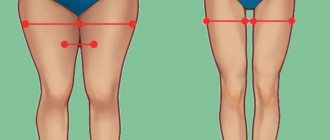What are carbohydrates
From a chemical point of view, carbohydrates are a class of organic substances that contain carbon, oxygen and hydrogen. There are only about 2-3% of them in the body, which are stored in the form of glycogen (roughly speaking, operational energy reserves). 5-6% of the total mass of the liver, up to 0.5% of the heart and 2-3% of skeletal muscles are carbohydrates.
In the body of a 70-kilogram man there is approximately 500 g of glycogen, but besides it there is also glucose, which “floats” freely in the blood. There is very little of it - about 5 grams. The more trained a person is, the more glycogen he can store.
The human body can synthesize carbohydrates, but in small quantities, so the bulk of carbohydrates enters the body with food. Carbohydrates are found mainly in foods of plant origin. For example, cereals contain about 80% of the total dry mass. And for example, sugar is generally 99.98% carbohydrate.
Types of fast carbohydrates
Fast (simple) carbohydrates are divided into:
- fructose
- glucose
- galactose
The most common is glucose. We get it from ordinary sugar, sweets, jam, etc. It is also found in other products, even green peas, but in much smaller quantities. If we have little glucose in our body, we become tired, irritable, and our ability to work decreases. If blood glucose is critically low, even fainting is possible.
Fructose is processed without the participation of insulin. When it reaches the liver, it is partially converted into glucose. Fructose is most abundant in melon, cherries, black currants, apples, and honey.
Galactose does not exist in pure form in food. “Meeting” glucose, it forms lactose and a disaccharide. Our body obtains galactose from milk and dairy products. In the stomach, lactose is broken down into galactose and glucose, and galactose travels through the blood to the liver, where it is transformed into glucose.
The structure of fast carbohydrates is quite simple, due to which they are quickly digested and enter the bloodstream. Their advantage is that if the body needs an urgent boost of energy, foods with fast carbohydrates satiate instantly, supplying large amounts of glucose or fructose into the blood. But satiety quickly passes, giving way in some cases to even greater hunger. Therefore, nutritionists and doctors do not recommend resorting to snacking on cookies, carbonated drinks and candy bars.
What are carbohydrates for?
Carbohydrates have their own tasks:
Energy: carbohydrates provide 50-60% of the body's daily energy consumption. When 1 g of carbohydrates is oxidized, 17 kJ of energy is released, or the more familiar 4.1 kcal and 0.4 g of water. Therefore, when you stop eating carbohydrates, you first “drain”, that is, the previously stored water comes out of you. This process is mistakenly mistaken by many for true fat burning, while glycogen stores are simply depleted.
The main source of energy for us is glycogen stored in the liver and muscles and free glucose in the blood, which are formed from the carbohydrates eaten.
Plastic or construction: some enzymes and cell membranes are “built” from carbohydrates; they are also part of polysaccharides and complex proteins of cartilage, bone and other tissues. Carbohydrates are stored as a reserve of nutrients, and are also part of complex molecules (for example, ribose and deoxyribose) and participate in the construction of the universal energy source ATP, the “storage” of genetic information DNA and macromolecules contained in cells - RNA.
Specific: carbohydrates, for example, act as anticoagulants, that is, they make sure that the blood does not clot at the most inopportune moment. They are receptors for a number of hormones or pharmacological substances - that is, they help hormones recognize where and in what quantity they are needed. They also have an antitumor effect.
Nutrient storage : carbohydrates are stored in skeletal muscles, liver, heart and some other tissues in the form of glycogen. Glycogen is a rapidly mobilized energy reserve. The function of liver glycogen is to provide glucose to the entire body, the function of muscle glycogen is to provide energy for physical activity.
Protective: Complex carbohydrates are part of the immune system. Mucopolysaccharides are found in mucous substances that cover the surface of the vessels of the nose, bronchi, digestive tract, and genitourinary tract and protect against the penetration of bacteria and viruses, as well as from mechanical damage.
Regulatory: food fiber does not undergo the process of breakdown in the intestines, but it activates intestinal motility and enzymes used in the digestive tract, improving digestion and absorption of nutrients.
What functions do carbohydrates perform in the body?
- are the main source of energy: 1 gram of carbohydrates = 4 kcal,
- are part of cells and tissues,
- determine blood type,
- are part of many hormones
- perform a protective function as part of antibodies,
- play the role of a reserve player: glycogen, which accumulates in the liver and muscles, is a temporary supply of glucose; if necessary, the body can use this reserve,
- Dietary fiber is necessary for the proper functioning of the digestive system.
What types of carbohydrates are there?
Bread, cereals, pasta, vegetables, fruits, sugar - these are all products of plant origin that consist primarily of carbohydrates or mono-, di- and polysaccharides.
Monosaccharides: These are simple carbohydrates that are not broken down by digestive enzymes. Glucose and fructose are monosaccharides found in many fruits, juices, and honey and are called sugars. They enter the body as if on their own if, for example, you ate a spoonful of sugar, or they are formed during the digestion process from more complex carbohydrates.
As soon as there is a lot of free glucose in the body, the pancreas is activated, which secretes the hormone insulin, thanks to which glucose is redirected to tissues, where it is used for the synthesis of glycogen, and with a significant excess, for the synthesis of fats (this is the effect of excess cakes and abuse fruit juices!) For monosaccharides to be our friends and not our enemies, their amount in the diet should not exceed 25-35% of the total amount of carbohydrates eaten per day.
Roughly speaking, for every 2 teaspoons of sugar (monosaccharides or simple carbohydrates), you need to consume 100 grams of oatmeal (complex carbohydrates).
Keep yourself in check with simple carbs
Nowadays it is very fashionable to replace glucose with fructose under the auspices that it is supposedly more useful and it is not stored as fat. This is not true: glucose and fructose are siblings. The only difference between them is that glucose contains an aldehyde functional group, and fructose has a keto group.
Disaccharides: This is a component of oligosaccharides, which consists of 2-10 monosaccharides. The main disaccharides are sucrose (regular table sugar), consisting of glucose and fructose residues, maltose (malt extracts of cereals, sprouted grains) or two glucose residues connected to each other, lactose (milk sugar) containing a glucose and galactose residue. All disaccharides have a sweetish taste.
Polysaccharides: These are complex carbohydrates made up of many hundreds or thousands of monosaccharides linked together. This type of carbohydrate is found in starch (potatoes, cereals, bread, rice, etc.), in “animal starch” - glycogen, in dietary fiber and pectin (fruits, vegetables, grains, legumes, bran, etc.) and easily digestible inulin ( Jerusalem artichoke, chicory root, onion, garlic, bananas, barley, rye).
Unexpectedly: fast carbohydrates do not lead to weight gain
Many people who are at least a little familiar with the principles of healthy eating have heard that fast carbohydrates are harmful to the body. It is believed that people who are watching their weight should avoid consuming them and give preference to “slow” carbohydrates.
However, a new study published in Advances in Nutrition shows that fast carbohydrates do not promote weight gain any more than slow carbohydrates. Moreover, by consuming fast carbohydrates, you can also lose weight.
Let us explain that the division of carbohydrates into fast and slow depends on their glycemic index (GI). The higher the index, the more the blood sugar level rises after eating a certain product.
Fast carbohydrates in products such as white bread and products made from premium (white) flour are easily digested and quickly broken down in the body into glucose. Hence the name.
In contrast, slow carbohydrates, which are found in whole grain bread and unprocessed cereals (brown rice, buckwheat, oatmeal), are broken down in the body much more slowly. Thus, they give a long-lasting feeling of fullness, and, in theory, promote weight loss.
The authors of the new work decided to test the established hypothesis that fast carbohydrates provoke excess weight gain and increase the risk of obesity.
This hypothesis is based on the fact that high GI foods cause a sharp spike in blood glucose levels. The latter entails increased insulin production. Which, ultimately, can provoke metabolic disorders leading to obesity.
It is also widely believed that foods with a low glycemic index have an extremely positive effect on the body. The researchers also decided to test this opinion.
Scientists analyzed 34 studies on the diet of a total of almost two million people. The researchers found out exactly how the glycemic index of the diet affected the weight of the participants.
“This is the first study to definitively show that fast carbohydrates do not make you fat,” said co-author Professor Glenn Gaesser of Arizona State University. — Contrary to popular belief, people who eat high GI foods are no more likely to be obese and gain weight than those who eat a diet of low GI foods. In addition, they are no less likely to lose weight.”
The study's main finding was that "GI, as a measure of carbohydrate quality, appears to be relatively unimportant as a determinant of body mass index or dietary weight loss."
In other words and a little more detail:
- In 27 studies with statistical comparison results, 70% found that BMI (body mass index) was either no different between people with the lowest and highest GI diets, or BMI was even lower in people choosing high GI foods.
- A meta-analysis of eight studies found that low-GI diets were generally no more effective for weight loss than high-GI diets.
- Although a low GI diet could lead to large weight loss in people with normal glucose tolerance, this did not occur in people with impaired glucose absorption.
“This review challenges the assumption that low-GI diets lead to significant improvements in weight control and reminds us of the many other qualities of carbohydrates that are more important to consider: for example, nutritional value, dietary fiber and whole grain content, and also the percentage of added sugar,” says co-author Siddhartha Angadi of the University of Virginia.
Scientists conclude that a balanced diet that does not result in the consumption of excess calories (which the body stores as fat) can include white flour products, which have long been “demonized.”
However, it is worth noting that this study was sponsored by the American Grain Foods Foundation, which accepts donations from private grain producers in the United States.
This means that although this study was tested for bias and published in a scientific journal, the scientists' conclusions should still be taken with caution.
We've previously talked about how foods high in fat and carbohydrates harm your brain function, and how many gluten-free diets do more harm than good. We also reported on the dangers of ketogenic diets. We also wrote that sometimes pasta helps you lose weight.
You will find more news from the world of science in the “Science” section on the “We Watch” media platform.
How many carbohydrates do you need?
WHO and RAMS recommend eating 4 g of carbohydrates for every kg of body weight. That is, for a girl weighing 60 kg, you need to eat 240 g of carbohydrates. This is approximately 360 g of boiled round rice, or 1.5 kg of boiled potatoes, or 2.6 kg of sweet apples, or 12 kg of celery.
4 g per kg of weight are recommendations for inactive people. For slightly moderately active, the norm is 5-6g, for moderately active (for example, 3 strength training sessions per week for an hour) – 6-7g. Athletes are recommended to eat at least 8-10g of carbohydrates for every kg of their muscular body.
What if without them? Risks of high-protein (no-carbohydrate) diets
Yes, humans are a protein-rich life form that can exist without eating carbohydrates, but this is unhealthy, illiterate, and will be harmful to health in the long run. Because reducing the carbohydrate content in food increases the breakdown of cellular proteins, fat oxidation and the formation of ketone bodies, which can lead to acidosis, that is, increase acidity in the body.
Usually, the oxidation products of organic acids are quickly removed from the body, but during fasting or a low-carbohydrate diet, they are retained in the body, which in the best case will lead to the appearance of acetoacetic acid and acetone in the urine, and in severe cases can lead to coma (this happens with diabetics).
Be careful with Dukan protein diets
Dukanites experience metabolic acidosis - with a lack of carbohydrates, acidic products accumulate in the tissues, that is, keto- or lactic acidosis occurs.
Ketoacidosis occurs due to insulin deficiency. When you eat critically low carbohydrates (less than 2 g per kg of body) for quite a long time, the body fuels itself with energy from glycogen and stored fats. The brain receives energy mainly by utilizing glucose and acetone is a toxic substance for it. Direct breakdown of fats cannot provide the brain with the necessary energy, and since glycogen reserves are relatively small (500 g) and are depleted during the first days after giving up carbohydrates, then the body can provide energy to the brain either through gluconeogenesis (internal glucose synthesis) or by increasing the concentration of ketone bodies in the blood to switch other tissues and organs to an alternative energy source.
Normally, when there is a deficiency of carbohydrate foods, the liver synthesizes ketone bodies from acetyl-CoA - ketosis occurs, which does not cause electrolyte disturbances (this is a variant of the norm). However, in a number of uncompromising cases, decompensation and the development of acidosis are also possible and can lead to diabetic ketoacidotic coma.
Fats in low-carbohydrate diets are burned worse than in a normal, balanced diet, since fats are usually combined with carbohydrates for subsequent conversion into energy, and with a lack of carbohydrates, incomplete fat burning occurs and a byproduct is formed - ketones, which accumulate in the blood and urine, what causes ketosis. Ketosis leads to a decrease in appetite (the body thinks that it is on the verge of survival), performance decreases, lethargy, fatigue and irritability become the norm.











